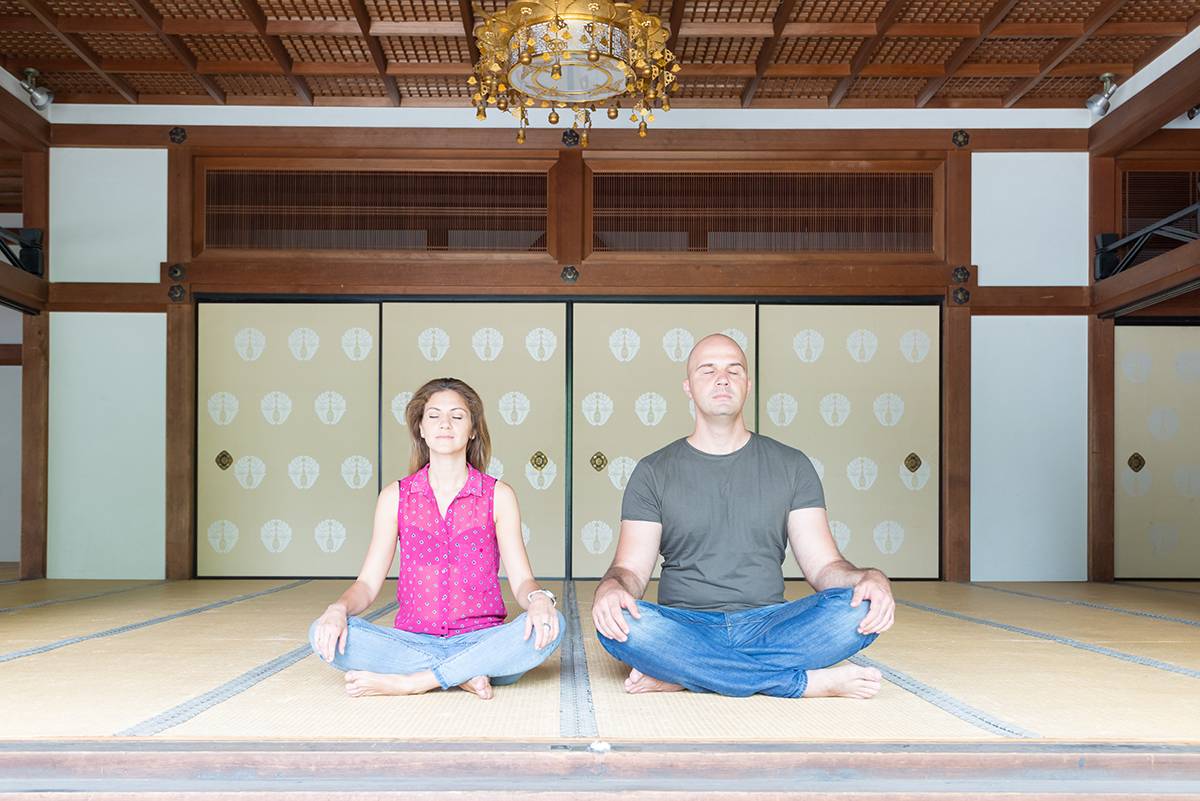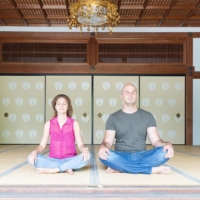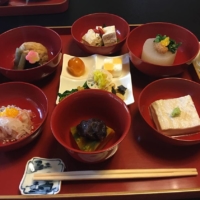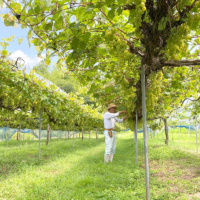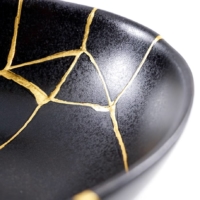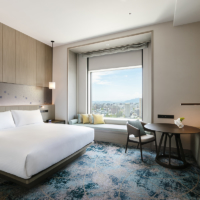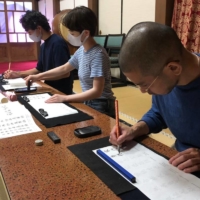Busy, sprawling and noisy cities are often the first things that greet visitors upon arrival in Japan. Landing in Osaka, a new arrival might wade through the throngs of people in Dotonbori, mesmerized by the acres of neon lights. Eager to try the local food, the battered octopus balls called takoyaki might be first, possibly followed by deep-fried pork cutlets. In the following days, dizzyingly fast bullet trains whisk travelers to all corners of Japan, with a seemingly endless supply of cities with web-like train networks, modern architecture and quick yet tasty food.
A world away from these urban scenes, temples and shrines dot the mountains of Japan, offering quiet corners of serenity and contemplation. More and more, visitors feel the pull of this simple life and discover a Japan that has survived into the present day. Recently, tourists are choosing to spend more time on having memorable experiences that touch the soul. Many will still leave with carefully boxed treats and electronic gadgets for souvenirs, but plenty will value the stories and experiences that stay in their heads and hearts. Like the time they took part in a tea ceremony at a quiet temple, drinking bitter matcha from a centuries-old bowl. Or when they sat in the lotus position practicing meditation as a tranquil-faced monk doled out light swats with a long wooden stick. These become the go-to stories for friends and family, rather than tales of ultra-crowded trains and dazzling department stores.
Legacy of Buddhism
There are plenty of temples for the would-be pilgrim to discover. Even a beginner can soon identify their common features: pagodas, incense burners, large wooden gates with statues of Buddhist deities, and statues of Buddha himself. Buddhism first came to Japan around the sixth century and permeates many parts of Japanese life, culture and society. Visiting temples can be both a religious experience and a sightseeing opportunity.
Synonymous with the religion is the philosophy of Zen and its practice of meditation. Temple guests are often invited to participate in meditation sessions, seated lotus-style on the floor in a practice known as zazen. The aim of zazen is to guide adherents to enlightenment, a heavenly goal, with a practical result of improving physical and mental health. Along the way, guides periodically hit participants with a wooden stick to encourage concentration.
Another well-known piece of Japanese culture born at temples like this is sado, the Japanese tea ceremony in which the ritualized preparation of matcha encourages focusing on small details. Attuning to these details is thought to prepare the mind for meditation. Visitors should seek out the chance to try sado at least once, paying attention to each movement, the seasonal decorations of the tea room and the rituals of calmness.
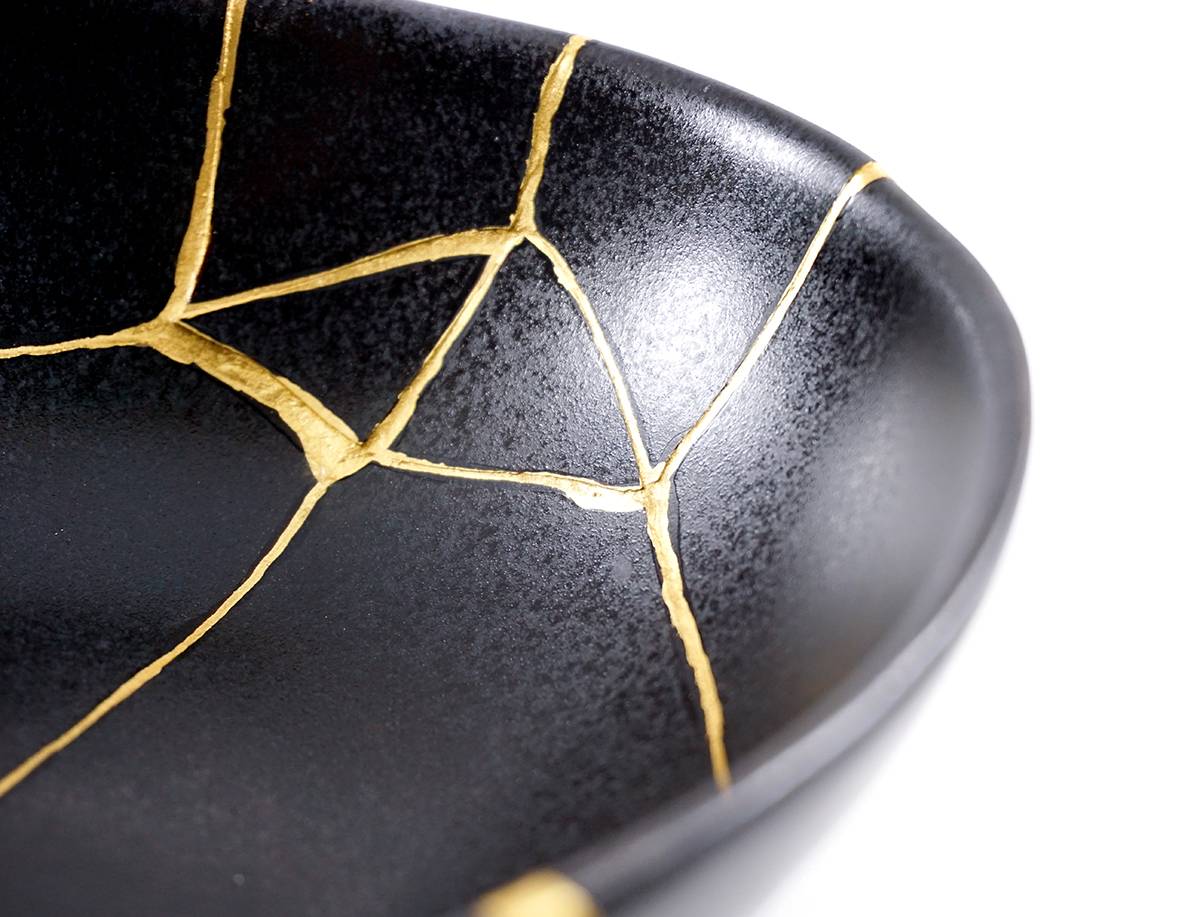
Another cultural practice related to sado is kintsugi, a technique for mending broken pottery with melted gold. The resulting product is not only a way to recover otherwise damaged implements, but a rebirth that also produces a new appearance often more valued than the original. Kintsugi workshops and hands-on experiences are recommended to anyone interested in learning something both artistic and functional.
Temple lodging
Pilgrims and tourists are welcome at many temples to stay overnight, a practice known as shukubo. Whether a serious religious undertaking or as a way to find a deeper connection to Japanese culture, shukubo offers the chance to observe and participate in the simple, austere and peaceful life of a functioning temple. The practice traces its origins to the peaceful days of the Heian Period (794 to 1185), when upper-class nobles took an interest in visiting temples.
Close to Tokyo, Yamanashi Prefecture offers spectacular views of Mount Fuji, a focal point for Japanese spiritualism and identity. Yamanashi’s Mount Minobu is the home of the 550-year-old Kakurinbo shukubo. While staying at such a facility, guests sleep on futon on tatami floors and are invited to join sunrise prayers. Recently, more comfortable rooms have become available at some temples to attract more visitors. Guest Villa Ebisuya, which is an old but renovated high-class villa held by Kakurinbo, is one such lodge. It’s surely a sign of the times that the humble shukubo is expanding to cater to a wider audience.
Mount Koya, which is known for many temples offering shukubo experiences, is the center of Shingon Buddhism, which is said to have been introduced to Japan by Kobo Daishi in the year 805. Since then, over 100 temples have sprung up on its forested slopes. The Kii Peninsula, where Mount Koya stands, is a mountainous area with many sacred sites and pilgrimage routes.
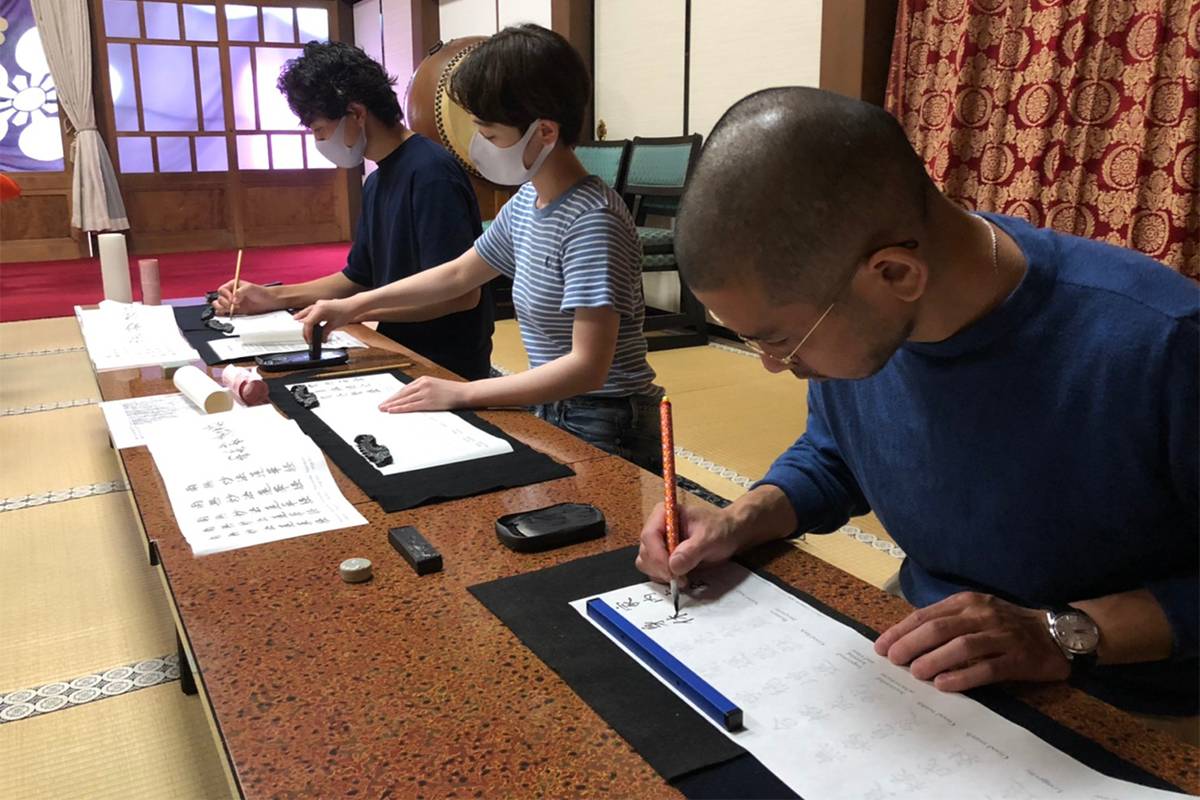
Visitors can experience a variety of activities while staying at a shukubo lodge, including shakyo, which is the hand-copying of sutras. Just holding the calligraphy brush and preparing the ink used for shakyo can evoke an otherworldly feeling. Even if the meaning of the kanji they write is a mystery, the meditative exercise still brings serenity. They can also try wearing beautiful kimonos, creating unforgettable memories to take home.
Eat like a monk
At shukubo, a special vegetarian cuisine is often served, known as shojin cuisine. It is based heavily on soybeans, seasonal vegetables and wild mountain plants. Buddhist ideals forbid the killing of animals, as consumption of meat is thought to cloud the mind and interfere with meditation. Summer dishes might feature cucumber, eggplant and tomato, while autumn is the time for root vegetables like pumpkin and mushrooms. Springtime is good for wild mountain greens like butterbur. This seasonal alignment is believed to bring the spirit in touch with nature.
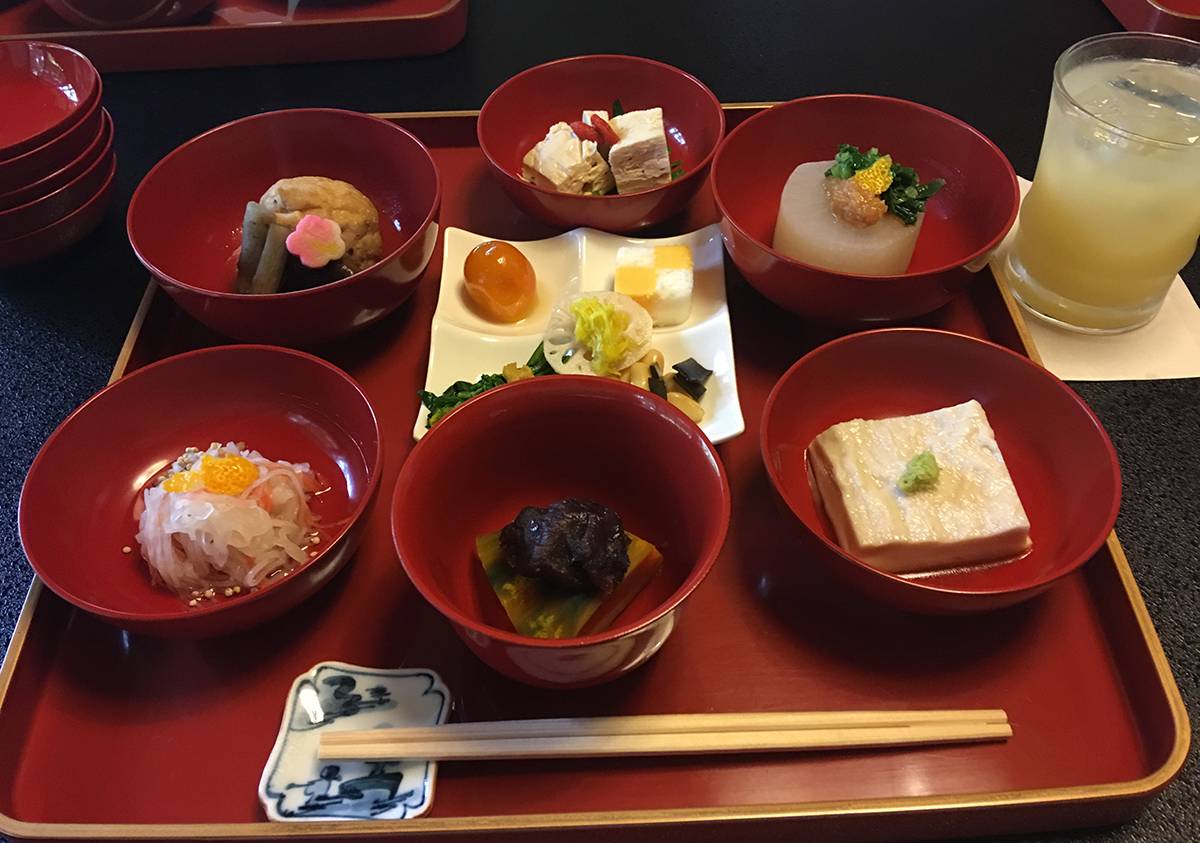
Tofu is a mainstay in shojin cuisine, and might be served raw with sesame, soy sauce and wasabi, mashed with vegetables as in the Japanese salad shiro-ae, or in the form of yuba — the soft, spongy skin that forms on the top of soy milk. Yuba is especially notable at Guest Villa Ebisuya, where the locally grown Akebono soybeans that are unique to the area produce an especially high-quality tofu. Gratification can be felt in body and soul after trying this healthy and spiritual meal, another experience found only in Japan.
Urban sights and sounds give way to secluded spots
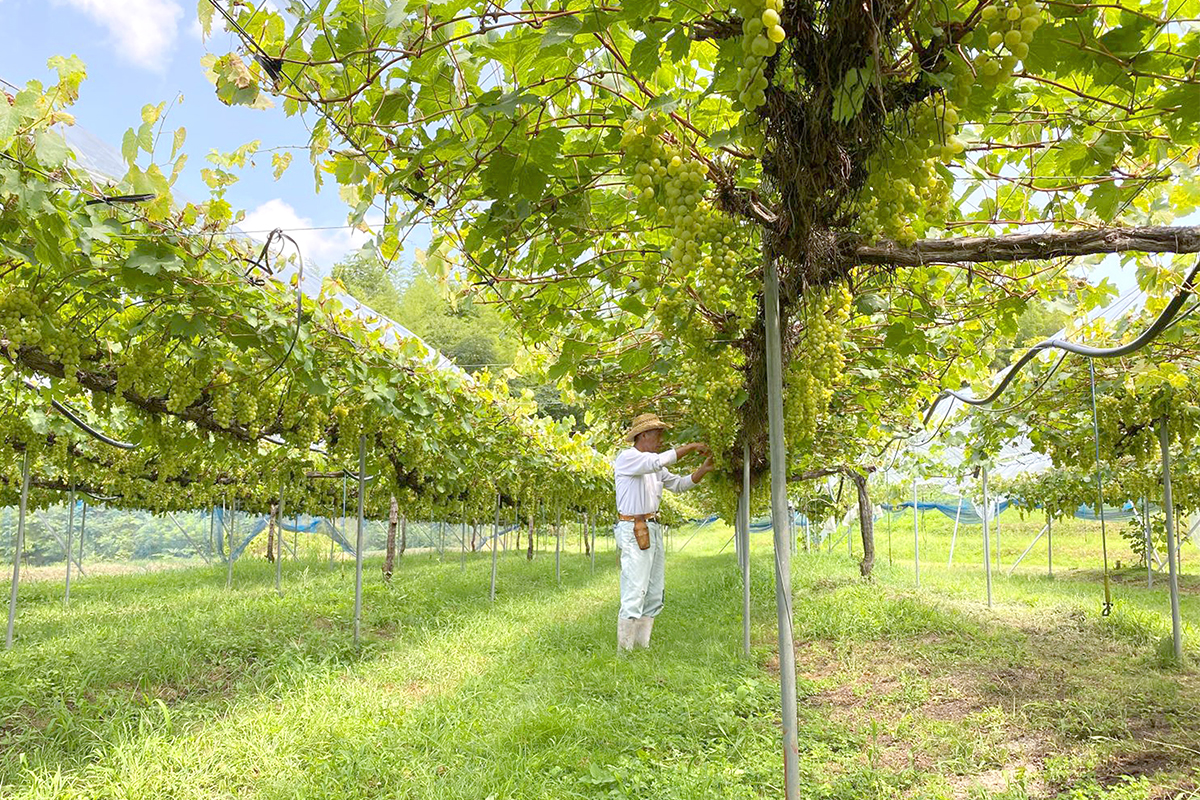
Hiroshima Prefecture has a long history and rich cultural heritage. Some of its tourist sights are known worldwide, while others remain more secluded. Situated in western Honshu along the Seto Inland Sea, the prefecture has a moderate and stable climate as well as an abundance of natural beauty.
Most visitors to the capital will first pay a visit to Peace Memorial Park near ground zero of the first atomic bombing. The park is now a green space for the city’s residents and 1.7 million annual visitors, who come to learn the area’s history at the Hiroshima Peace Memorial Museum, pay respects at the Memorial Cenotaph and Children’s Peace Monument, and contemplate peace at the Atomic Bomb Dome. The city embraces its role as an anti-nuclear weapons ambassador and takes the responsibility of keeping the memory of that tragic day in August 1945 alive.
Within the city, visitors can witness the elegance of a typical Edo Period (1603 to 1868) garden at Shukkei-en. The arrangement of trees, bridges, valleys, floating islands and tea houses evokes a simpler time, while each season brings different blooming flowers. The garden was built for the first feudal lord of Hiroshima Nagaakira Asano more than 400 years ago. Those looking for a different experience might visit instead the home of the local baseball team, the Hiroshima Carp. Beloved by local residents, any game at Mazda Zoom-Zoom Stadium Hiroshima is guaranteed to be a raucous time owing to their exuberant fans.
In a country better known for brewing sake, Japan is also a producer of wine. Hiroshima’s location on the Seto Inland Sea creates a climate friendly to vintners. Its altitude of 300 to 500 meters and high-quality water and good sunshine allow operations like the Sera Winery to prosper. This particular vineyard is notable for cultivating the Hiroshima-native varietal called honey venus, which is said to have a mellow, fruity aroma and gentle sweetness.
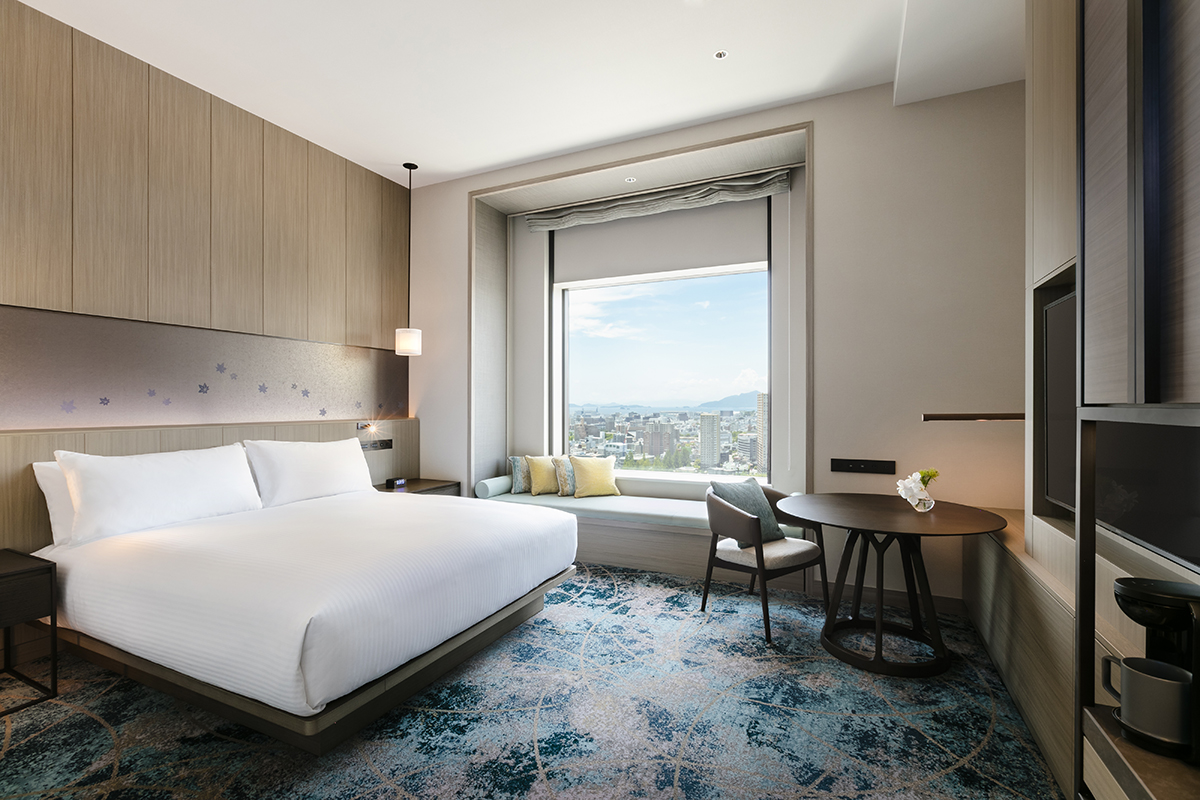
Japan’s reputation for omotenashi (selfless hospitality) is well-earned and Hiroshima is no exception. Omotenashi culture and the nation’s high-tech image converge in Japan’s modern hotel experience, with features like digital check-in, Wi-Fi, digital keys, indoor pools, fitness centers, multiple on-site restaurants and even EV charging now commonplace. Integration with smartphone apps and other conveniences will exceed expectations, and world-class facilities can be found in all major areas. In the heart of the city, guests can stay at any number of modern, tech-savvy hotels within walking distance of many tourist attractions. One example is the Hilton Hiroshima, where interior design cues are taken from the gentle nature of the Seto Inland Sea and guests expect the highest standard of service and hospitality, all while appreciating the modern facilities of Japan’s top-tier hotels.



